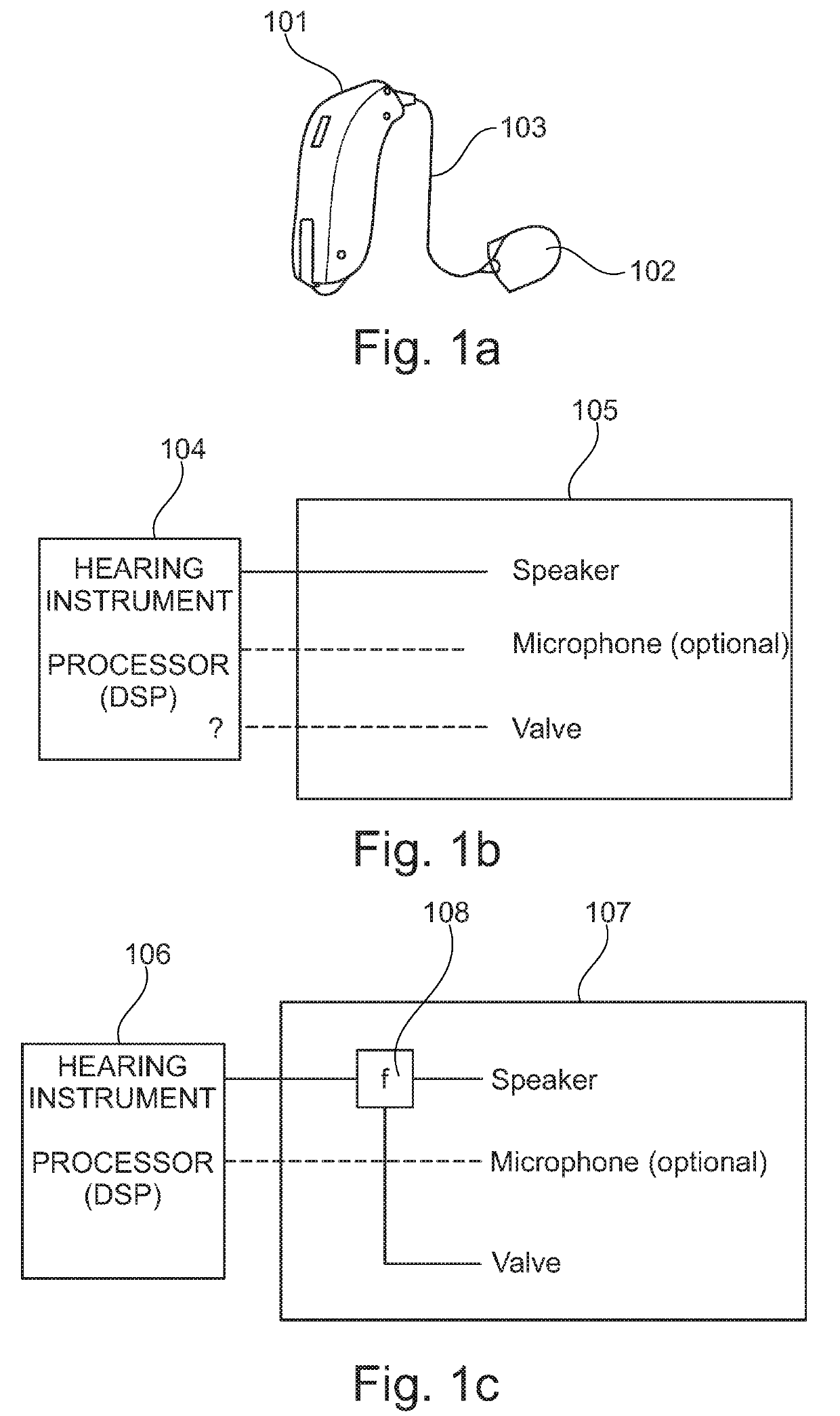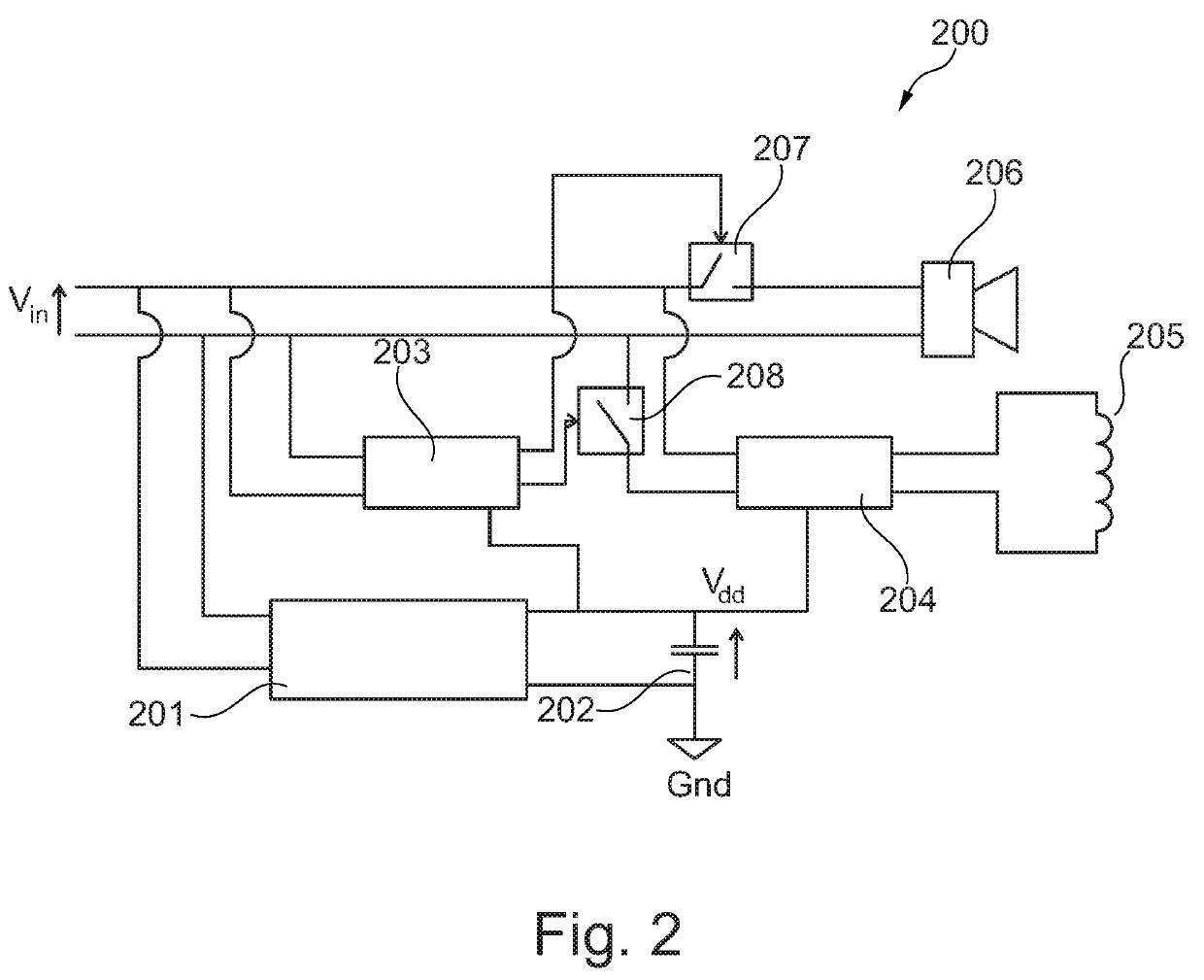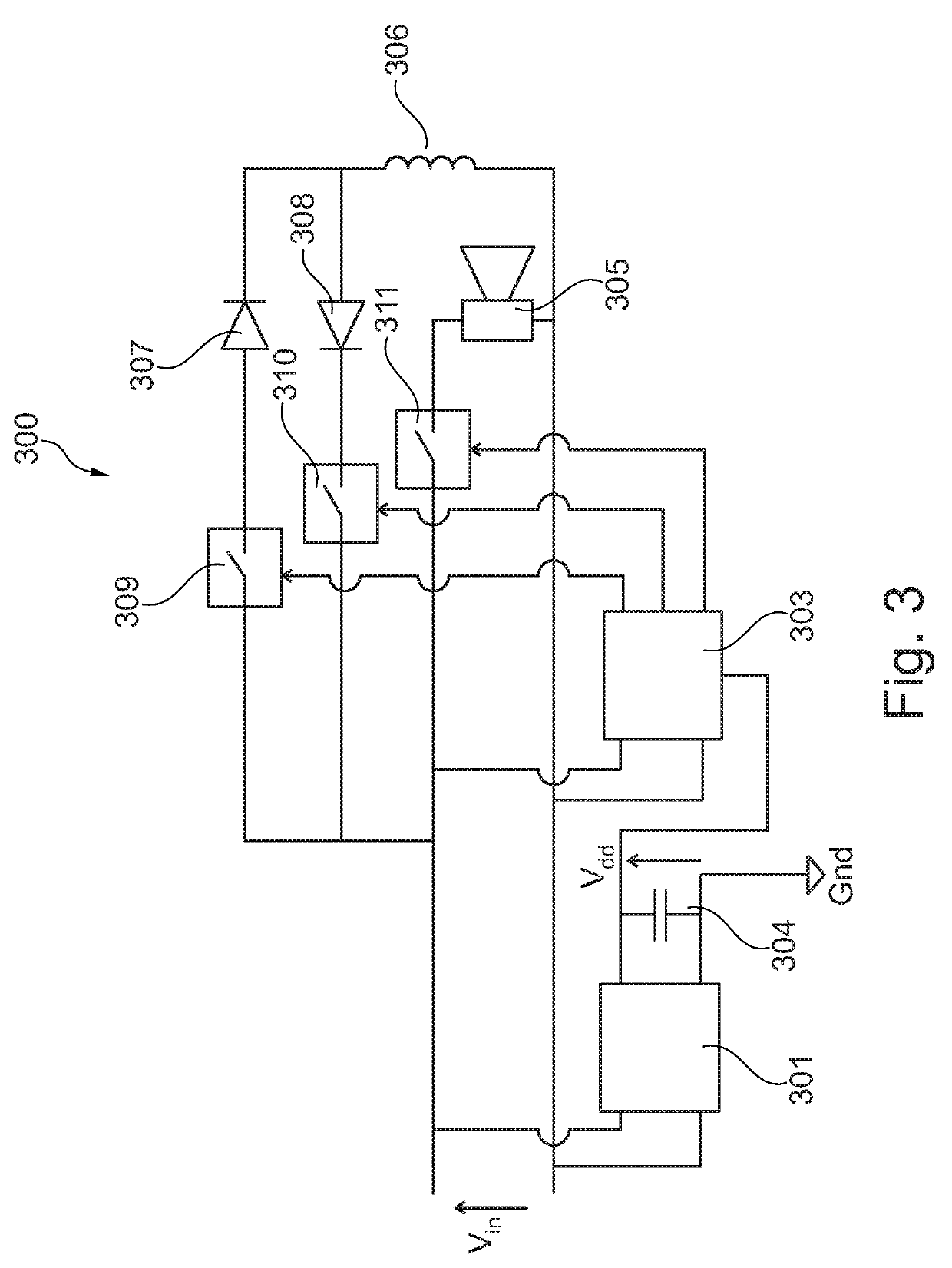Electronic circuit and in-ear piece for a hearing device
a technology of in-ear piece and electronic circuit, which is applied in the direction of valve details, earpiece/earphone mechanical/electrical switches, and electromagnets. it can solve the problems of backward compatibility problems between the hearing instrument and the new in-ear piece, the functionality of the in-ear piece, and the need for a new connector. it can reduce the generation of impact nois
- Summary
- Abstract
- Description
- Claims
- Application Information
AI Technical Summary
Benefits of technology
Problems solved by technology
Method used
Image
Examples
Embodiment Construction
[0106]Referring now to FIG. 1a a hearing device comprising a hearing instrument 101 and an in-ear piece 102 is depicted. The hearing instrument 101 is adapted to be positioned behind the ear of the user of the hearing device, whereas the in-ear piece 102 is adapted to be positioned at least partly in the ear canal of the user of the hearing device. The hearing instrument 101 and the in-ear piece 102 is electrically interconnected by a number of electrical wires 103 so that one or more electrical signals may be exchanged between the hearing instrument 101 and the in-ear piece 102. The number of wires interconnecting the hearing instrument 101 and the in-ear piece 102 does not exceed three electrical wires, thus including a single twisted pairs of wires.
[0107]As shown in FIG. 1b the hearing instrument 104 comprises a digital signal processor (DSP). The in-ear piece 105 comprises a speaker, an acoustic valve and an optional microphone. A speaker, an acoustic valve and a microphone woul...
PUM
| Property | Measurement | Unit |
|---|---|---|
| force | aaaaa | aaaaa |
| retention forces | aaaaa | aaaaa |
| retention force | aaaaa | aaaaa |
Abstract
Description
Claims
Application Information
 Login to View More
Login to View More - R&D
- Intellectual Property
- Life Sciences
- Materials
- Tech Scout
- Unparalleled Data Quality
- Higher Quality Content
- 60% Fewer Hallucinations
Browse by: Latest US Patents, China's latest patents, Technical Efficacy Thesaurus, Application Domain, Technology Topic, Popular Technical Reports.
© 2025 PatSnap. All rights reserved.Legal|Privacy policy|Modern Slavery Act Transparency Statement|Sitemap|About US| Contact US: help@patsnap.com



